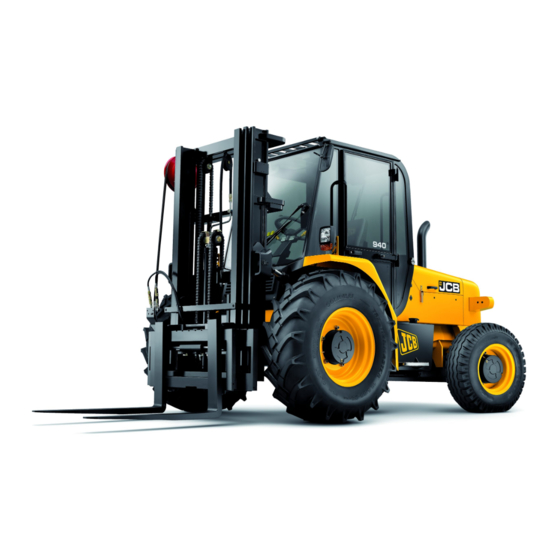
Table of Contents
Advertisement
Quick Links
Dear JCB Customer
Even if you have operated this type of equipment before,
Your Local JCB Dealer is:
it is very important that your new machines operations and
functions are explained to you by a JCB Dealer
Representative following delivery of your new machine.
Following the installation you will know how to gain
maximum productivity and performance from your new
product.
Please contact your local JCB dealer if the Installation
Form has not yet been completed with you.
OPERATOR MANUAL
THIS MANUAL SHOULD ALWAYS STAY WITH THE MACHINE
RTFL - 926, 930, 940, 950
ENGLISH - 9811/5700 - ISSUE 7 - OCTOBER 2013
Copyright © 2004 JCB SERVICE.
All rights reserved. No part of this publication may be reproduced, stored in a retrieval system, or transmitted in any form or
by any other means, electronic, mechanical, photocopying or otherwise, without prior permission from JCB SERVICE.
A4-7-SkidSteer - Printed In England
Advertisement
Table of Contents






Need help?
Do you have a question about the RTFL 926 and is the answer not in the manual?
Questions and answers